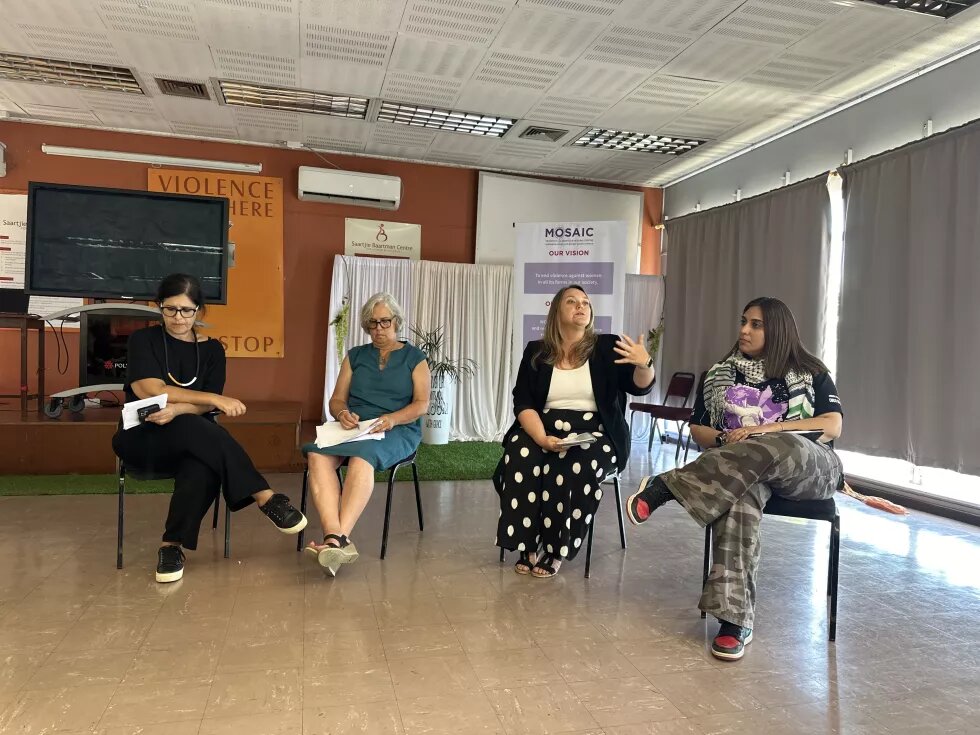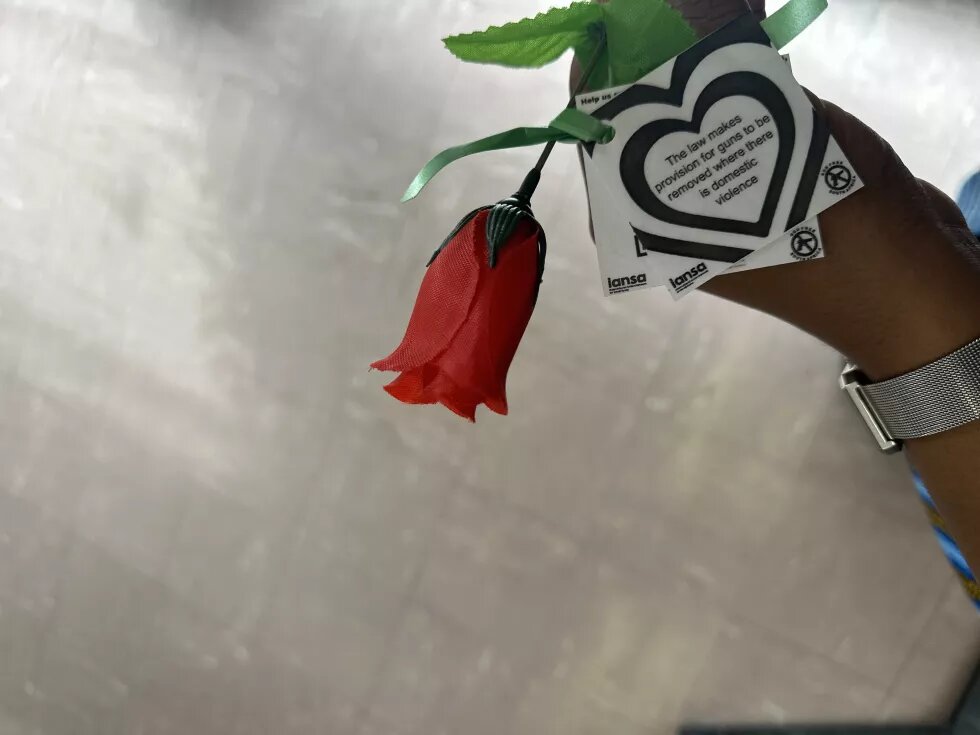
Gun violence within abusive relationships is a subject that is all too familiar for anti-violence organisations and activists but seldom gets the public attention that it deserves.

When I was 15-years old, my mother’s partner fired a gunshot into the kitchen cupboard during an argument. The shot was fired just outside our bathroom door, where I was sitting with my mom, trying to calm her down. If he had aimed just 15 degrees to the left, I might not have been here.
Fast forward fifteen years and I am coordinating a youth workshop with Gun Free South Africa when the facilitator asks everyone who has experienced gun violence to raise their hand. Mine stayed confidently by my side. By then, not only had I forgotten this event, but it did not fit with the typical gun violence I was familiar with: gang shootings, murder and violent crime. It was only after a data collection exercise with very specific questions such as: have you ever seen a gun, held a gun, heard a gunshot, known someone who owned a gun; that the veil dropped and I finally recognised the ‘incident’ for what it was: dangerous, life-threatening and domestic violence.
REMOVING THE TRIGGER
Gun violence within abusive domestic relationships is a subject that is all too familiar for anti-violence organisations and activists but seldom gets the attention that it deserves. In February this year, Gun Free South Africa, MOSAIC, the National Shelter Movement of South Africa and the Cape Town office of the Heinrich Boell Foundation launched a new campaign that aims to strengthen the rights and safety of victims from gun-related domestic violence. The Removing the Trigger campaign was conceptualised after Jessica Shah approached Gun Free SA to assist her in getting justice for her daughter, Sasha-Lee Shah. Sasha was shot and killed by her ex-boyfriend in October 2022 after months of stalking and harassment. Despite an interim protection order that had instructed the police to remove the firearm from his possession, the police failed to remove the gun.
That same year, the Medical Research Council published results from its third femicide study as part of a national research project spanning 18 years. The 2017 femicide data showed that three women are killed by their intimate partner every day, with guns used in 18% of cases seen. The findings also revealed that 23 of the women killed by their husbands and boyfriends were in possession of protection orders against them at the time of their death.
Adele Kirsten, Director of Gun Free South Africa (GFSA), said that the overall aim of the campaign is to strengthen women’s right to safety from gun-related domestic violence.
“Both the Domestic Violence Act and the Firearms Control Act have clauses that enable women to ask for a gun to be removed, but not every woman is aware of this,” she said. “There is a question on the Form 6 application [for protection orders] that specifically asks if there is a gun present and whether you want it to be removed. If the protection order is granted, this becomes a court order and the police must comply.”
Speaking at the launch, Mariam Mangera, National Co-ordinator for the National Shelter Movement South Africa (NSM) said that they have found men will often use the gun for coercion and control.
“We have heard from victims that men will use a gun to threaten their intimate partner, but use other weapons such as their fists or knives to assault, because they know that a gun will carry a harsher sentence if arrested and convicted.”
Kerryn Rehse, Advocacy and Policy Specialist at MOSAIC Training, Service & Healing Centre (MOSAIC) said that the use of guns in domestic violence is a complex issue, it extends beyond discharging the firearm, so the campaign is designed around three components.
“We don’t know enough about the use of guns in these situations, so the first component will be a research study analysing various sources of data to understand the nature and extent of gun violence in domestic violence relationships. Next, we want to use the research to raise awareness at multiple levels through community rights workshops and with implementing stakeholders such as the police and justice departments. Lastly, we will look for ways in which existing laws and policies can be strengthened that don’t require huge amendments.”
A RIGHT TO PROTECTION
Junior Associate at the Women’s Legal Centre, Andrea-Joy Jantjies, said that the Centre has encountered issues with the implementation of protection orders.
“In our experiences working with communities and women, either through our Legal Advice Unit or our Human Rights Defenders in communities, we know that firearms are not always confiscated when a protection order is granted. While the Form 6 application for a protection order includes a question on whether the respondent carries or has access to a firearm for work purposes, women are not aware that they must inform the court that the perpetrator owns or has access to a firearm. Another issue we’ve seen is that even though police officers and/or the Court are responsible for the service of final protection orders, we have noted instances where women are told to serve protection orders themselves, which they fear will cause the violence to escalate.”
Jantjies said that it is absolutely crucial for women to know that a weapon can be removed and that they should inform the court when the perpetrator owns a weapon or even has access to one through, for example, their occupation.
“It may just save their lives,” she added. “Also important to know is that a weapon can be seized and removed at an incident of domestic violence according to the National Instruction Section 10(4) or in terms of a court order in Section 15(2), and that ‘weapon’ means any weapon or object that can cause harm to a body when used to assault a person, such as a knife, gun, ammunition or sjambok.”
Kirsten acknowledged that women should not bear the responsibility for ensuring that laws and policies are implemented, but unfortunately, often it’s up to the women to follow up and make sure that the police comply with protection orders.
“It’s one of the aims of our research component. We want to find out to what extent the police comply with the domestic violence protection orders where there’s a regulation to remove a gun? With Shasha-Lee, they failed to comply. How often does this happen?”
For information on removing a gun in a case of domestic violence, visit Gun Free South Africa’s Take Action webpage. For counselling and support please contact Mosaic via www.mosaic.org.za or +27 (0)21 761 7585; if you require shelter from domestic violence call the National Shelter Movement helpline at 0800 001 005 and for legal advice on domestic violence, visit the Women’s Legal Centre website at www.wlce.co.za or email them at info@wlce.co.za.